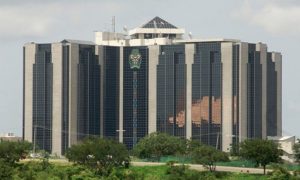
The Central Bank of Nigeria’s latest tweak to the monetary policy corridor marks a pivotal shift aimed at easing liquidity constraints and stimulating credit expansion in the economy. By narrowing the spread between its lending and deposit windows, the apex bank has effectively lowered short-term borrowing costs for commercial banks while creating a more favourable environment for on-lending to households and businesses.
Analysts say the move signals a strategic recalibration toward growth-supportive monetary policy, offering banks cheaper access to liquidity while encouraging an uptick in private sector credit that could help counter sluggish economic activity and strengthen financial stability.
The Central Bank of Nigeria’s (CBN) decision to maintain the benchmark Monetary Policy Rate (MPR) but sharply adjust the Standing Facility corridor is a targeted, non-conventional easing measure intended to tackle two major financial market frictions: the high cost of interbank borrowing and the banks’ preference for parking idle cash at the CBN.
“This is significant easing from the CBN. Both the SDF and SLF rates are cut 200 basis points,” said Razia Khan, Chief Economist and Head of Research, Middle East, Africa at Standard Chartered Bank.
This move signals the CBN’s commitment to injecting liquidity and encouraging private sector lending without jeopardizing the Naira’s stability, which is anchored by the high MPR.
“The adjustment in the width of the standing facilities/lending corridor was aimed at boosting interbank transactions and enhancing monetary policy transmission,” analysts at Meristem Securities said.
The adjustment of the Asymmetric Corridor from +250 {bps}/-250 {bps} to +50 {bps}/-450 {bps} around the MPR (currently at 27%) creates two distinct effects.
The cut of the Standing Lending Facility (SLF) from 29.5% to 27.5%, eases interbank pressure, making it cheaper for banks to borrow short-term funds from the CBN, reducing the ceiling for interbank overnight rates and improving overall systemic liquidity.
The reduction in the Standing Deposit Facility (SDF) rate from 24.50% to 22.50% should help spur credit growth by significantly reducing the return banks get for depositing excess cash with the CBN, discouraging this practice and incentivizing banks to lend funds to the real sector instead.
“We believe this positions banks to keep more liquidity circulating within the system rather than warehoused at the CBN. The lower SDF return reduces the incentive to hold idle balances with the CBN, while the narrower spread at the top end lowers the cost of covering end-of-day liquidity gaps through the SLF,” Meristem analysts said.
The corridor adjustment could also encourage more lending to the real sector, since the lower SDF reduces the incentive for banks to place idle funds with the CBN and makes credit creation slightly more attractive, according to Meristem.
“This may help support investment and capacity expansion for businesses,” Meristem analysts said.
“That said, the overall impact may be modest, as holding the MPR keeps borrowing costs elevated, which may still constrain real-sector demand for new credit.”
The CBN’s decision is also anticipated to keep liquidity, which currently stands at N2.31 trillion, elevated.
This is premised on the position that banks are likely to either deposit funds with the CBN at the 22.50% window or deploy them in the fixed income market at around 16.85% (NTB), while maintaining conservative lending to borrowers.
The resultant higher demand is likely to keep rates lower, particularly at the short end of the curve.



